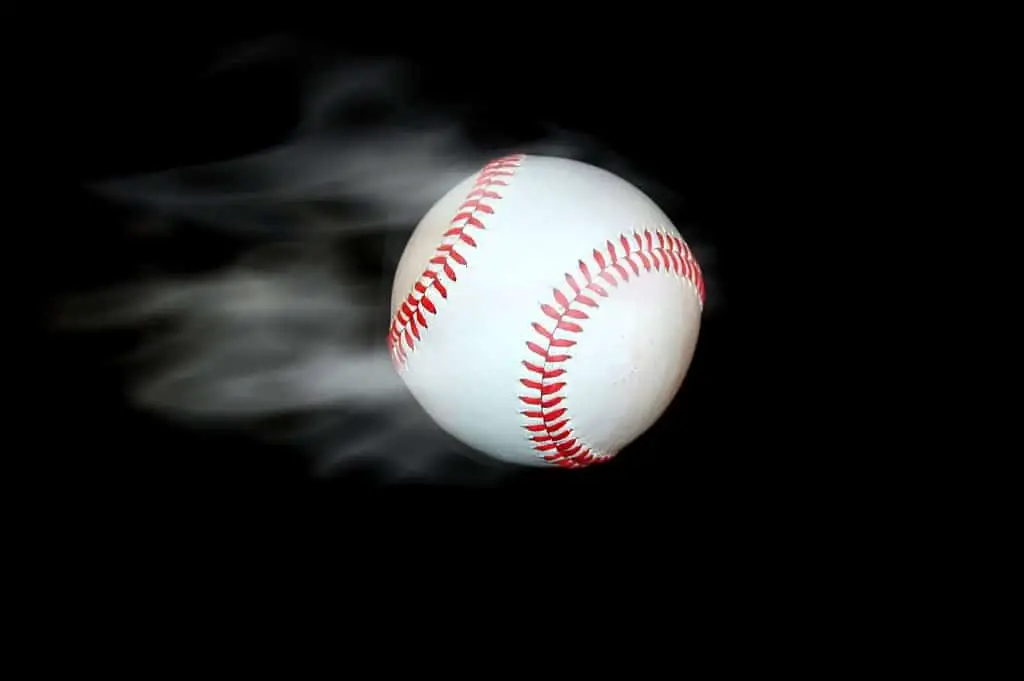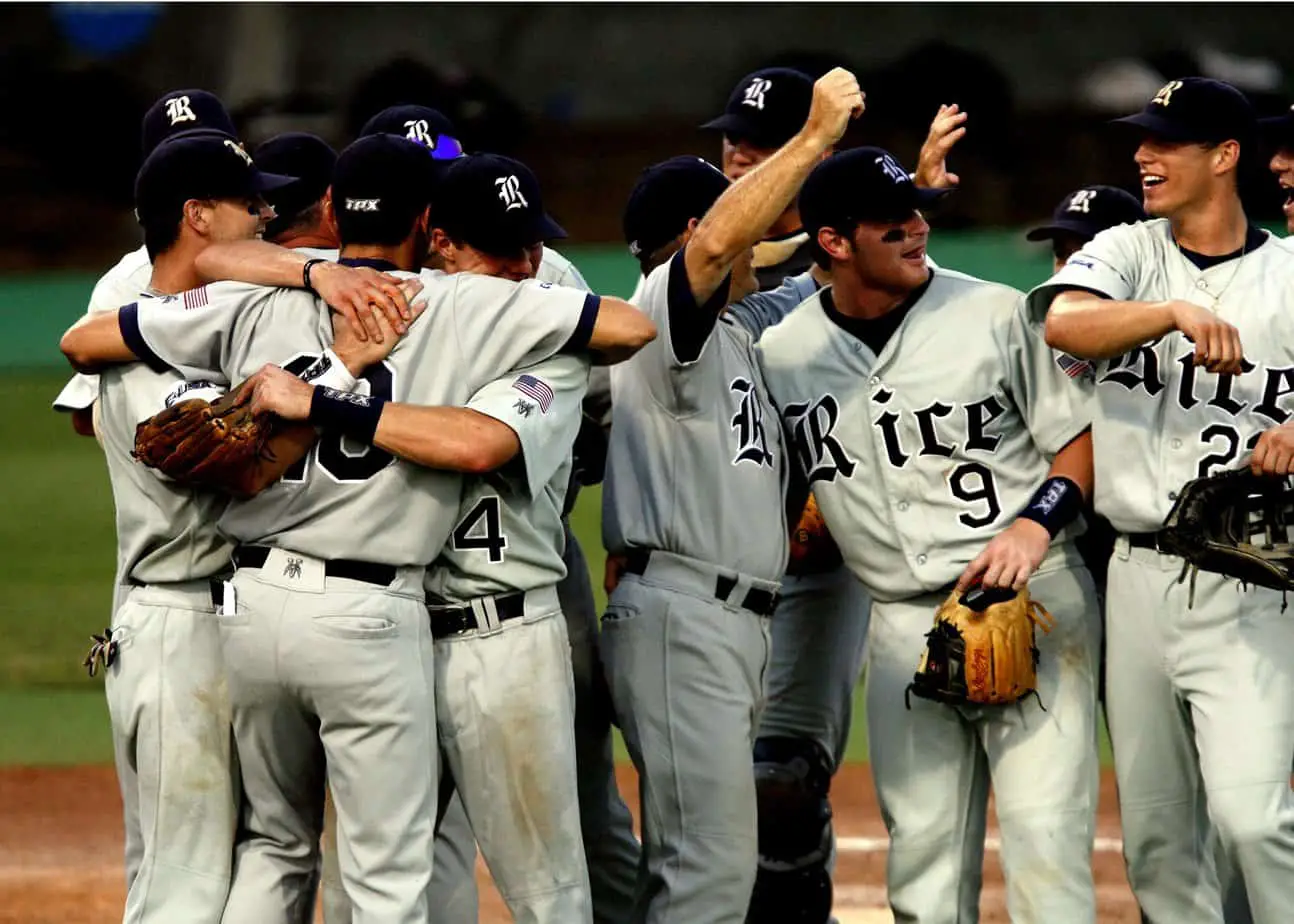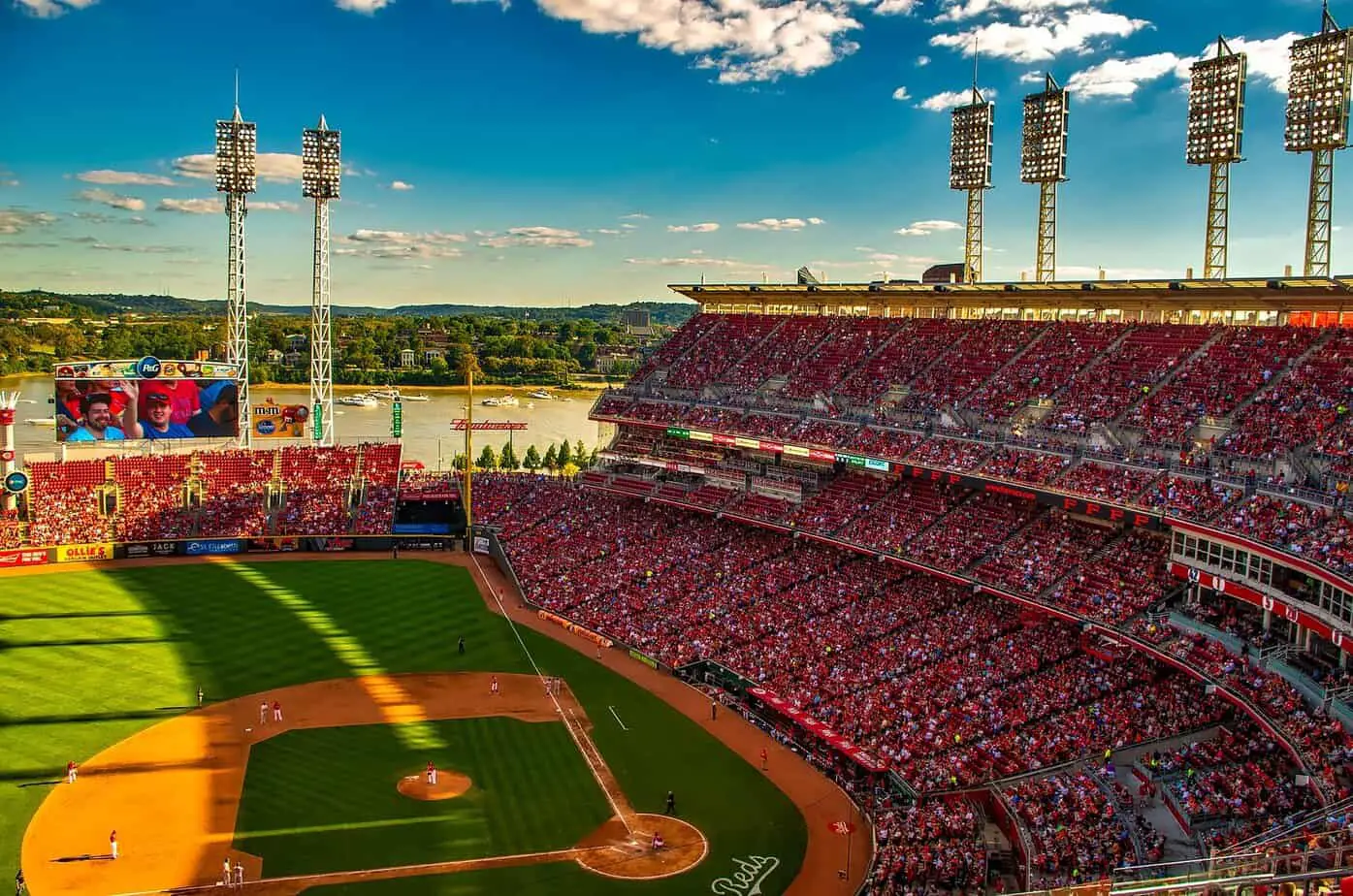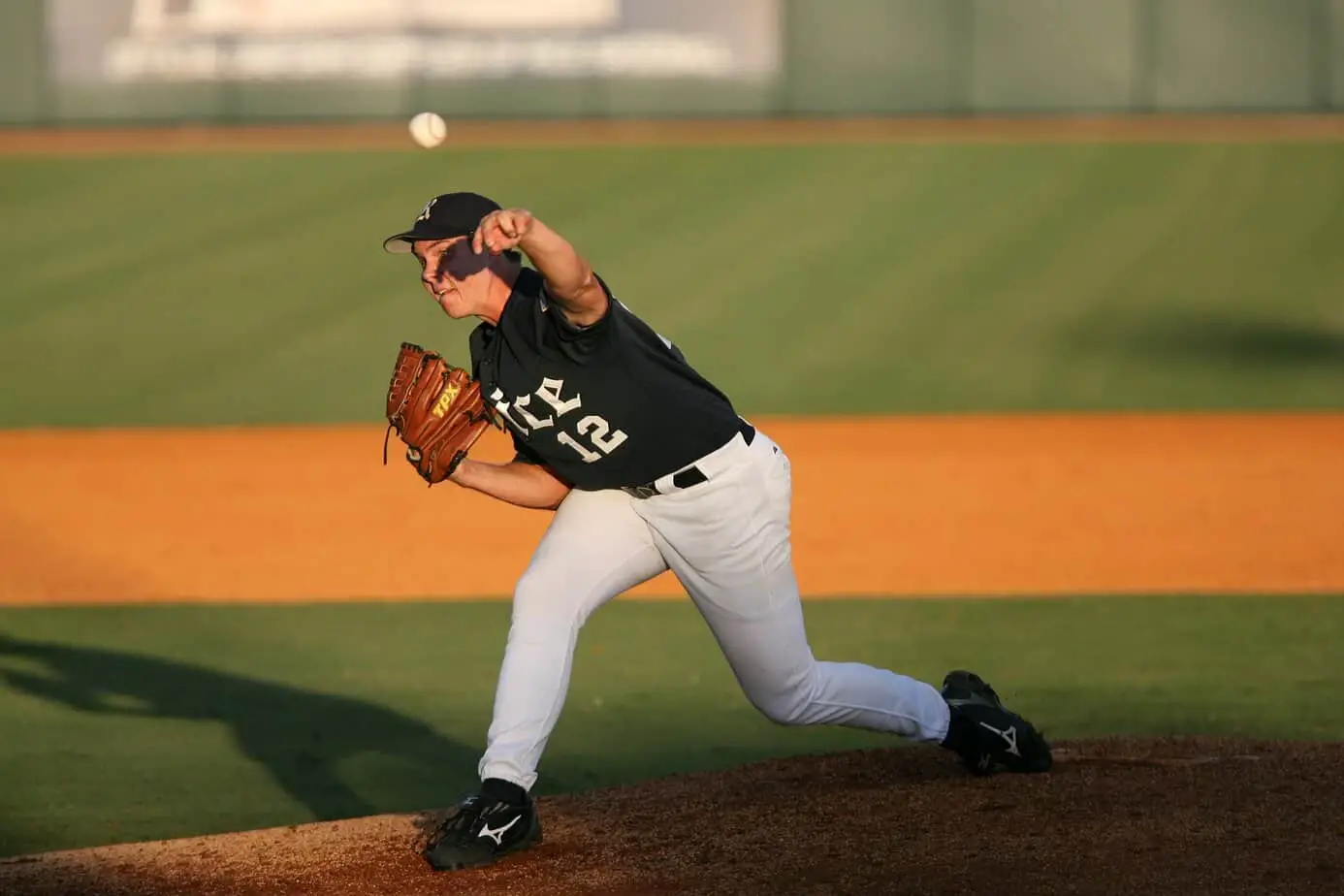There are so many different things to learn about the national pastime, and some of the most fascinating aspects of the game are the mechanics of what’s happening on the field. Have you ever wondered, for example, “How fast does a baseball travel?”
The average velocity of a baseball after it has been struck by the bat is around 87mph for MLB players, although many can achieve an exit velocity of 90 mph or more. When it comes to pitching speeds, the velocity of a fastball is between 50 and 60 mph for the average person, but more than 90 mph for an MLB pitcher.
Read ahead to find out more about the speeds at which a baseball travels during a game, as well as some fascinating statistics on the fastest pitchers and hitters of all time.
How Fast Do Different Baseball Pitches Travel?

There are many different ways that a baseball travels during a game, and some of them are significantly faster than others. If it’s simply being passed between fielders the ball can be moving at a very leisurely pace, but pitching is often about generating a lot of speed.
There are different kinds of pitches, however, and they’re not all designed to be moving at top speed.
- Fastball: Many fastballs, like the typical four-seam fastball, are thrown as fast and as hard as the pitcher can possibly manage, while still maintaining accuracy and control.
- Breaking Balls: These balls move in the air – typically sideways or downwards – so they are a little slower. Breaking balls are intended to confuse the batter rather than overpower them with speed.
- Changeups: This is where the speed of the ball gets really interesting. A changeup should look like one type of pitch but then arrive at the plate differently, often appearing to be a fastball but actually moving slower to confuse the batter’s timing.
With all of that in mind, it’s easy to understand why pitching speeds vary so greatly between pitches.
What Speed Do Fastballs Travel at?
So, if fastballs are the ones that generate the most speed, how fast are they actually moving? Well, it all depends on the pitcher.
If the average person were to pitch their best fastball, it wouldn’t necessarily be moving too quickly through the air. Most amateur players below the age of 10 average a pitching velocity of between 40 and 50 mph, which increases to around 50-80 mph for players between 10 and 18, and adults might start throwing at 80 mph and above.
In general, though, most people can throw a fastball at around 50-60 mph.
For professionals, things are a little different. The average fastball in the MLB has gone up from 90.9 mph in 2008 to 94.9 mph last season, and that is just an average! There are many fastballs on record that were moving at more than 100 mph before they reached the plate.
What Is The Fastest Pitch On Record?
So, how fast can a baseball really move when the best of the best are pitching it? Well, there are some truly remarkable pitch speeds on the books.
According to Major League Baseball, the fastest recorded pitch of all time was thrown by left-handed relief pitcher Aroldis Chapman at Petco Park on September 25, 2010. He threw a fastball that was clocked at 105.1 mph, according to PITCHf/x.
Although this might still be the number to beat, there are a lot of pitchers that are getting surprisingly close every year. In the 2022 season alone, 13 players threw a fastball at 102 mph or more.
How Are Baseball Pitches Measured?
So, how do we know the kind of speed that these pitches are traveling at? Well, there are a few different methods that have been used in the past, but PITCHf/x has now become the standard.
PITCHf/x is a system designed by Sportsvision which debuted in the 2006 postseason, and it is now installed at all MLB stadiums. It doesn’t just measure the speed of a pitch, but the trajectory as well.
It essentially works by using three mounted cameras to keep track of the ball’s speed and precision, and it has an accuracy of better than one mile per hour and one inch.
At individual stadiums and across different television networks, some other technologies are used to register the speed of a pitch, and they don’t always match up. In 2011, for example, Ardolis Chapman seemed to beat his own record with a 106 mph pitch, according to the stadium ray gun, but the PITCHf/x reading actually came out at just 102.4 mph.
How Fast Does A Baseball Move After It’s Been Hit?
Although pitching is definitely one of the most exciting areas where the ball is moving at speed, it’s far from the only one. In fact, the ball often achieves even more speed after it’s been hit.
When the ball first leaves the bat (the exit velocity) is the point at which it is traveling the fastest, then it will slow down as it moves through the air.
The average exit velocity for MLB players is 87 mph, but heavy hitters will regularly achieve 90 mph or more.
What Are The Fastest Baseball Speeds In History?
When you want to find the highest speed that a baseball has ever moved, you need to look at the heavy hits.
Many of the hardest-hit homers in baseball belong to two players: Giancarlo Stanton and Aaron Judge. Let’s take a look at the fastest exit velocities to date, according to Statcast.
- Giancarlo Stanton, August 9, 2018: 121.7 mph
- Giancarlo Stanton, July 25, 2020: 121.3 mph
- Aaron Judge, June 10, 2017: 121.1 mph
- Giancarlo Stanton, June 11, 2022: 119.8 mph
- Manny Machado, August 20, 2021: 119.6 mph
Summary: How Fast Does A Baseball Travel?
So, how fast does a baseball travel? Well, it depends on whether it’s being pitched or hit, and it depends on who’s doing the pitching and hitting.
The average fastball in MLB is around 94.9 mph, whereas the average exit velocity for a hit in MLB is about 87 mph.
When it comes to the records, though, the heavy hits are where you see the biggest speeds. The fastest recorded pitch in baseball is 105.1 mph, whereas the fastest exit velocity on record is 121.7 mph.



